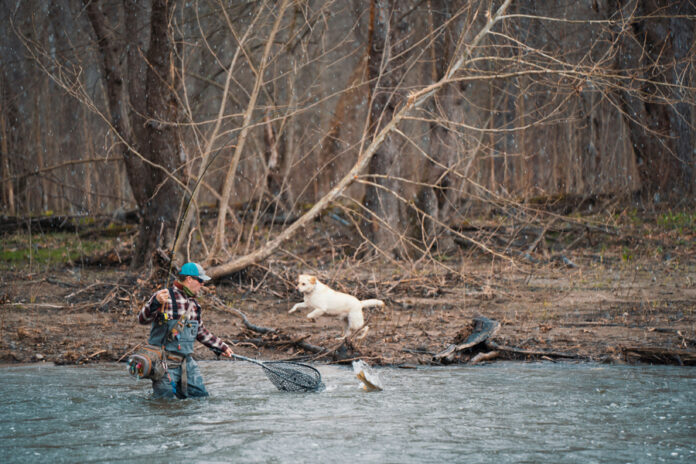Written by: Dan Pribanic, Chagrin River Outfitters
For many fly anglers, fall brings a chance to fish for migratory species, particularly steelhead. Here in the Great Lakes region, we dutifully watch the weather, hoping for just the right conditions: rain, cooler temps, and overcast skies. We live for those crisp mornings on the water, swinging a fly through our favorite run, or drifting a nymph rig along a likely current seam, in hopes of hooking a dime-bright fish fresh from the lake. If your fall plans include chasing Great Lakes steelhead, here are three things to keep in mind when searching for “silver bullets.”
1. Fish Early and Late
Steelhead are happiest in low-light conditions, especially in the early fall, when the water is often lower and clearer than the fish prefer. Pay attention to the position of the sun while you are fishing. Steelhead don’t have eyelids or polarized sunglasses, so fish staring into the sun are less likely to bite than fish with the sun at their backs. If you can find shaded water with good depth and structure, fish it first, since the steelhead will seek it out. Riffles with decent depth also act as good overhead cover, and provide more dissolved oxygen as well, which is crucial for migratory species when water temps are warmer early in the season.

2. Start Fishing Close to Shore
As steelhead move upstream, they prefer the softer inside seams, rather than having to swim against the main current. This is especially true when water levels are up after a good rain. So rather than jumping in and immediately bombing out a long cast, remember that the fish are often right under your rod tip. Only after you have adequately covered the inside holding water should you start fishing farther out.
3. Don’t Overthink Your Fly Selection
Fresh Great Lakes steelhead are not usually very fussy when it comes to fly selection. We catch a lot of them on patterns as simple as colored yarn balls. Matching the fly size to the water conditions should be your main goal: the higher the water, the bigger and brighter your flies should be. Keep in mind that most of the time, if fish are present but you are not hooking up, the issue is more likely with your presentation than your fly selection. Try going a little deeper, or reducing drag on your drift, before changing flies.
When you do change flies, make it a big change, meaning don’t switch from a yellow egg pattern to an “Oregon Cheese” color, as they are too similar. Rather, try switching to something completely different, such as pink or chartreuse.

Bonus Tip
Around late October/early November when the water is full of fallen leaves, your orange and yellow egg flies tend to get lost in the mix. Try using something that stands out better color-wise, such as fluorescent pink or chartreuse eggs, to draw the steelhead’s attention.
Dan Pribanic is owner/operator of Chagrin River Outfitters in Chagrin Falls, Ohio.
Credit: Source link































